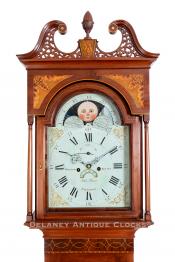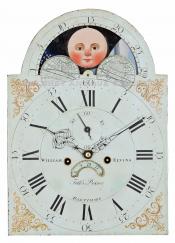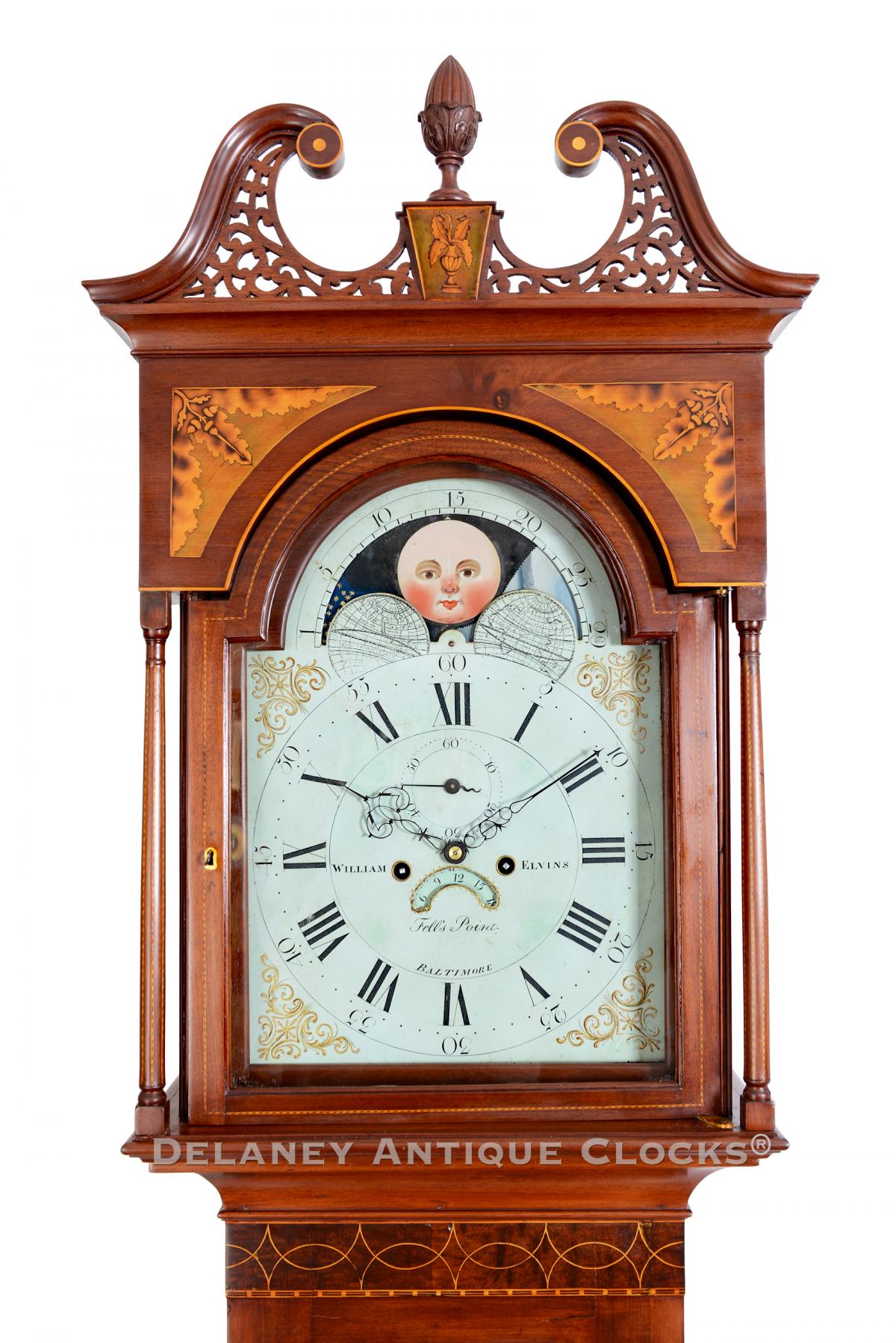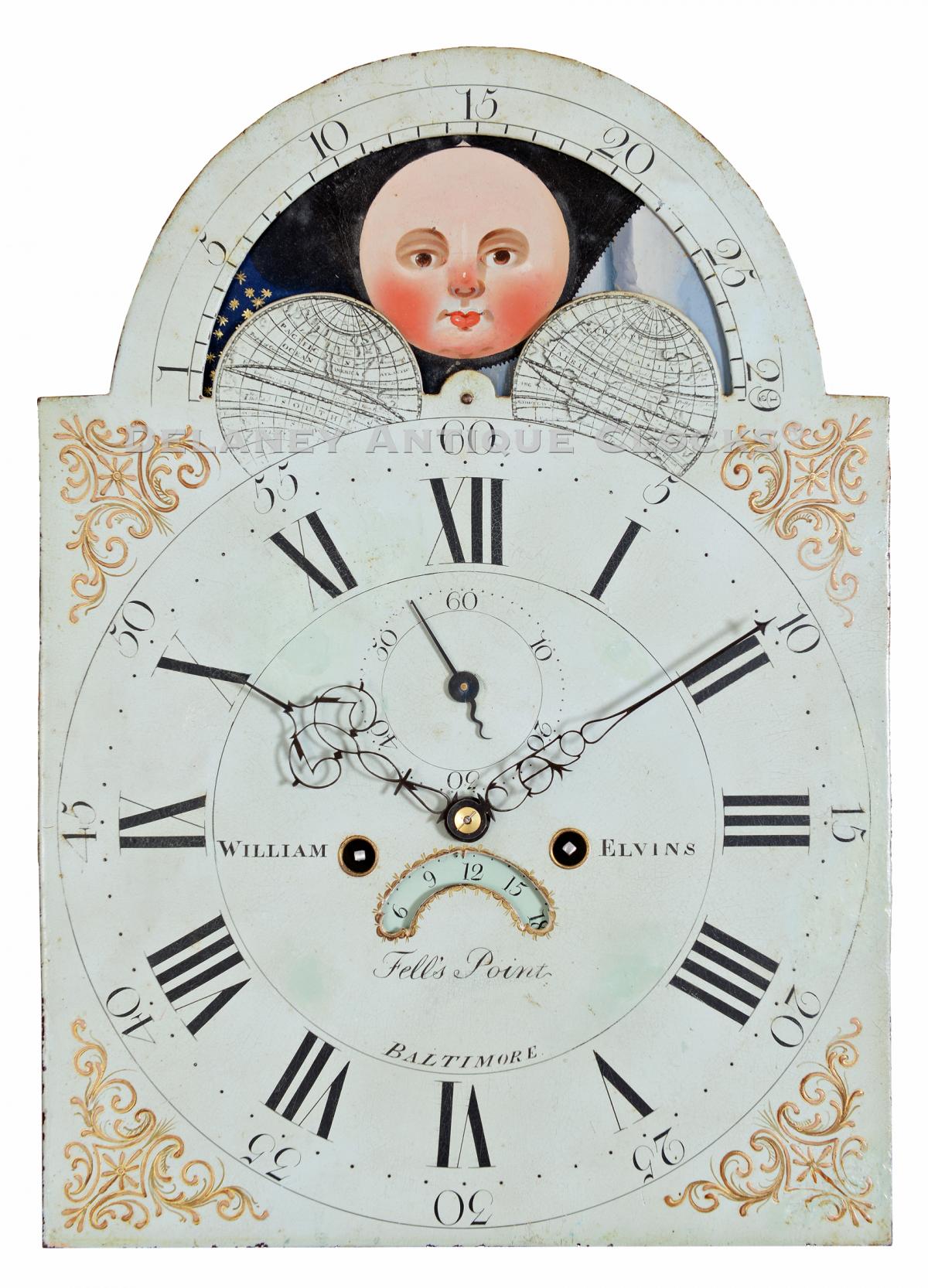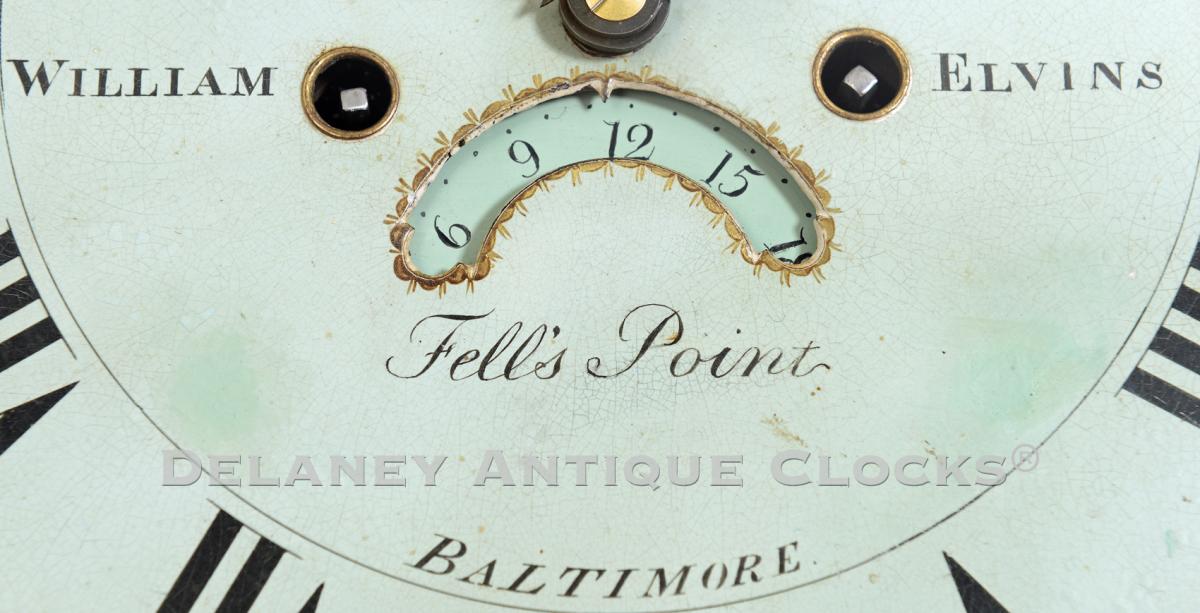William Elvins, Fells Point, Baltimore, Maryland. An inlaid tall case clock with moon phase dial and eight-day duration brass movement. The case is attributed to the cabinetmaker's partnership of Bankson & Lawson. 223071.
This impressive 19th-century Federal mahogany tall case clock was made by William Elvins, Fells Point, Baltimore, Maryland. The extensive use of carefully chosen figured mahogany and lavish inlay work suggests that this case was made by the furniture makers Bankson & Lawson.
This case stands on shapely formed ogee bracket feet. The base panel format is complex. The forward corners are fitted with inset fluted quarter columns that terminate in turned wooden capitals. The center of the base features a book-matched veneer panel. The mahogany grain pattern selected for this location is better than most. This panel is bordered with a lined inlay and a broadly formed cross-banded mahogany border. The waist section is long and features a nicely shaped door veneered door. The vibrant selection of mahogany is trimmed with a light wood string border and a cross-banded framing. A cock beaded molding follows the perimeter of this access door. The sides of the waist share the fluted quarter column detail exhibited in the base section. Above the door is an additional inlaid panel incorporating a lacy geometric design. The bonnet features a cornice molding supporting an applied swan's neck molding and inlaid terminals. This attractive pattern is greatly enhanced with a pierced fret below the horns. The central plinth is inlaid with an urn and flower pattern. The plinth supports a carved wooden finial. Below this is the decorated tampium. The inlaid husks are sizeable, and the shaded design is a recurring theme for this cabinet shop. The front hood columns are fully turned and inlaid along their length. They terminate in simple wooden capitals. Additional wooden columns are fitted at the back corners of the hood. The arched bonnet door is also decorated with a line inlay pattern. This glazed door opens to access the dial and wind the clock.
This painted iron dial is signed "William Elvins / Fells Point / BALTIMORE." It displays hours, minutes, seconds, days of the month, and the moon's or lunar calendar phases. Lacy gilt designs decorated the four spandrel areas. The steel hands are a lovely design.
The clock movement is constructed in brass and is of good quality. Four-turned pillars support the two large brass plates. Hardened steel shafts support the polished steel pinions, brass gearing, and recoil escapement. The winding drums are grooved. The movement is weight-driven and designed to run for eight days fully wound. It is a two-train or a time-and-strike design, having a rack and snail striking system. As a result, it will strike each hour on the hour on a cast iron bell mounted above the movement.
This clock was made circa 1797.
This clock case shares a similar construction and case orientation to a clock pictured in the 2000 edition of the Chipstone Foundation, American Furniture. The article is titled The Genesis of the Neoclassical Style in Baltimore Furniture, written by Priddy, Flanigan, and Weidman.
Inventory number 223071.
William Elvins is listed as working in Baltimore, Maryland. Elvins took out many ads. The first known is in the October 27, 1795, Maryland Journal. At the time, he was on Fell's Street. In 1799, he was listed as working in a shop located at 32 Thames Street. He also took on an apprentice, John Gill, who was 13 in the same year. In 1801, an advertisement placed him at 4 Fell's Street. He moved several times. In 1801, he was on 10 Bond Street, and in 1802-08, at 12 Fell's Street. In 1805, he took on Charles W. Harding as an apprentice, who left before he served his time. In 1816, Elvins relocated to Fredericktown (later Frederick), Maryland, where he operated William R. Elvins & Co. Clock and Watch Makers on North Market Street. Our last public reference for Elvins is a record of his 1820 marriage to Caroline Bogen, a local Fredericktown woman.
The Baltimore Museum of Art owns a fine Elnins tall clock. A second clock is part of the permanent collection of the Museum of Early Southern Decorative Arts (MESDA).



